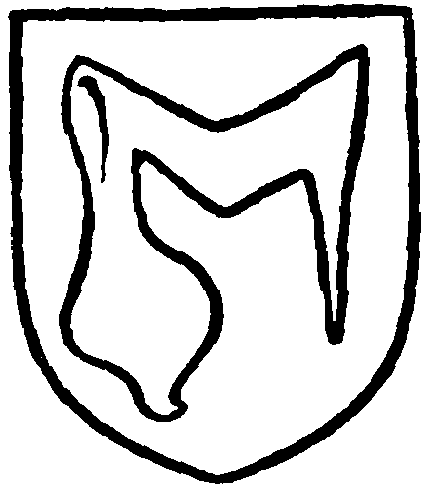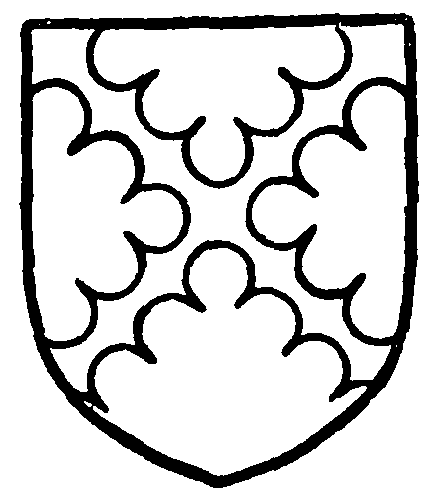A History of the County of Lancaster: Volume 8. Originally published by Victoria County History, London, 1914.
This free content was digitised by double rekeying. All rights reserved.
'Townships: Yealand Conyers', in A History of the County of Lancaster: Volume 8, (London, 1914) pp. 177-180. British History Online https://www.british-history.ac.uk/vch/lancs/vol8/pp177-180 [accessed 11 April 2024]
In this section
YEALAND CONYERS
Betheleghton, 1246; Leghton, 1348.
The southern half of Yealand lies upon the hilly ridge extending north from Warton Crag; here it attains a height of 400 ft. above sea level. On the eastern slope is the village of Yealand Conyers; on the western is Leighton, below which is the level tract of Leighton Moss. The eastern slope leads into an open vale, bounded on the east by gently rising ground. The township is well wooded, and there are fine views over the country. Near the south-west boundary is a copper mine. The area measures 1,581½ acres, (fn. 1) and there was a population of 267 in 1901.
The Lancaster and Kendal road goes north through the township. West of it, higher up the hill, goes the road through the village from Warton to Yealand Redmayne, with branches east and west. The main line of the London and North-Western railway runs through the eastern half of the township. Along the boundary at this side passes the Lancaster and Kendal Canal.
The soil is limestone. Barley, oats and roots are grown. In 1831 the inhabitants were largely employed in flax-spinning and linen manufacture. (fn. 2)
The township is governed by a parish council.
Manor
In 1066 there was only one manor of YEALAND, and it no doubt included Silverdale. The whole was assessed as four plough-lands, and was held by Earl Tostig as appurtenant to the neighbouring lordship of Beetham. Roger of Poitou held the same in 1086. (fn. 3) Later it became part of the barony of the Lancaster family, (fn. 4) being held by the service of the eighth part of a knight's fee, (fn. 5) and on division the Yealand Conyers part was assigned to Margaret de Ros of Kendal.
Before 1176 William de Lancaster I granted Yealand and Silverdale, as a plough-land and a half, this being apparently a moiety of the whole, to Adam de Avranches. (fn. 6) Adam was succeeded by his son Roger de Yealand, (fn. 7) who, with the assent of his wife Sunniva, gave land in his demesne there to the brethren of Cockersand (fn. 8); and Roger's son Adam de Yealand, (fn. 9) sheriff of the county from 1228 to 1233, (fn. 10) followed.
Adam left a daughter and heir Alice, (fn. 11) who married Robert de Conyers, and their portion thus acquired its distinctive name. The manor was also called LEIGHTON or Leighton Conyers. (fn. 12) Leighton seems at first to have been the demesne land, but was in later times regarded as a manor distinct from Yealand Conyers, and the tenures became confused. The Conyers family held it for half a century or more, (fn. 13) and it then passed, probably by marriage, to the Crofts of Dalton. (fn. 14) There was some dismemberment also, for younger branches of the Croft family had Tewitfield in Warton and Silverdale. The manor proper, Yealand Conyers and Leighton, descended with Dalton until the partition of 1489, when it was assigned to Sir Robert Middleton, (fn. 15) as son of Geoffrey, who had married Alison daughter and co-heir of James Croft. (fn. 16)

Conyers. Azure a maunch or.
Robert Middleton himself married Agnes or Anne daughter and heir of Roger Beetham. (fn. 17) He was made a knight at Hutton Field, near Berwick, in 1482. (fn. 18) His son Thomas (fn. 19) died at Kendal in 1517 holding certain messuages and land called the manor of Leighton, &c., of the heirs of Sir Thomas Parr by services unknown; lands in Yealand were held of the king as of his duchy by the tenth part of a knight's fee. (fn. 20) Geoffrey, the son and heir, aged fifteen, died in London a few months after his father, and then a younger son, Gervase, became heir. (fn. 21) His wardship and marriage were in 1520 granted to Sir William Parr. (fn. 22) He recovered part at least of the Beetham inheritance and died in 1548, leaving his son George to succeed him, he being twenty-six years old. (fn. 23)

Middleton of Leighton. Argent a saltire engrailed sable.
George Middleton, who recorded a pedigree in 1567, (fn. 24) died early in 1600 holding the manors of the queen—Yealand as of her duchy of Lancaster by the fourth part of a knight's fee and Leighton as of her barony of Kendal—and various other manors, lands, advowsons, &c. His heir was his son Thomas, aged twenty-three. (fn. 25) In the main the family continued faithful to the Roman Catholic religion, (fn. 26) their names occurring on the recusant rolls, though in some cases the head of the family temporized to escape fines and persecution. (fn. 27) Thomas Middleton was not a temporizer, for in 1629 he compounded by an annual fine of £100 for the two-thirds of his estates liable to sequestration for recusancy. (fn. 28) He recorded a pedigree in 1613, (fn. 29) and in 1631 paid £13 6s. 8d. as composition for refusing knighthood. (fn. 30) He died in 1640 holding the manors of Leighton (with the park), Yealand Conyers, Yealand Redmayne (with the new park), &c.; the heir was his son George, aged thirtythree. (fn. 31)
In May 1642 the tenants of the lordship of Yealand Redmayne, Yealand Conyers and Yealand Storrs complained of divers exactions. They held by inheritance according to the custom of the manor, by annual rents and services, a 'running fine or gressum ' called a 'town take,' being a double rent every tenth year and arbitrary fines at the death of lord or tenant, from two to four years' rent. A widow had paid no fine, but had given the best beast. Thomas Middleton, the late lord, and his son George had recently attempted to increase the arbitrary fines on succession up to twelve years' rent or more, and to alter the conditions of tenure. The park was overstocked with deer, which depastured the tenants' lands. (fn. 32) A decree in Chancery in 1659 confirmed an award made concerning the fines payable and other customs of the manors; it sets out the names of the tenants and the rents payable. The tenements were customary freehold, being conveyed by deed by the lord's licence, which could not be refused if the fine was paid. The lord admitted the heir on the death of a tenant. (fn. 33)
The Civil War then broke out, and George Middleton, who was made knight (fn. 34) and baronet (fn. 35) by the king in 1642, took a prominent part as a Royalist, (fn. 36) and was captured at the surrender of Dublin in 1647. His estates had been sequestered by the Parliament, but he was eventually allowed to compound. Nothing was said of his recusancy, (fn. 37) so that he was outwardly a conformist. Part of the estate was mortgaged to Sir Thomas Sclater. (fn. 38) A settlement of the manors was made in 1658. (fn. 39) Sir George outlived the Commonwealth, serving as sheriff in 1661 (fn. 40) and recording his pedigree in 1664. (fn. 41) He died in February 1673–4, (fn. 42) and his daughter Mary was his heir. She married Somerford Oldfield of Somerford in Cheshire (fn. 43) and had several children. The only son George Middleton Oldfield died intestate 25 January 1708–9, (fn. 44) and his heirs were his sister Katherine wife of Thomas Fletcher of Hutton in the Forest, Cumberland, and his niece Dorothy wife of Albert Hodgson or Hodshon, who was daughter of another sister Anne by Edmund Gooden. (fn. 45)
In 1711 a partition of the estates was made. Albert Hodshon took Leighton Hall and most of the demesnes, Thomas Fletcher taking the three manors of Yealand with other estates. Mr. Hodshon was a Roman Catholic and Jacobite, and, taking open part with the Scottish invaders of 1715, went with them to Preston, (fn. 46) and was probably captured there. His life interest in the Leighton estate was declared forfeit (fn. 47) and was sold by auction in 1723; it was bought for him by a friend, (fn. 48) and he continued to live at Leighton. The will of Dorothy wife of Albert Hodshon, dated 1751, disposed of the capital messuage of Leighton and Leighton Park, part of the inheritance of her uncle George Middleton Oldfield. (fn. 49) She had two daughters, Mary, who married George, younger son of Charles Towneley of Towneley, and Anne, who married Bryan Hawarden of Wigan. (fn. 50) Neither had any issue, and George Towneley, who became owner of the estate, where he resided till 1782, devised it to his nephew John Towneley of Towneley, and by him it was sold about 1790 to Alexander Worswick, son of Thomas Worswick, the Lancaster banker. (fn. 51) Alexander died in 1814, and was succeeded by his son Thomas, but the estates were sold after the failure of the bank in 1822. Leighton was purchased by a cousin, Richard Gillow of Lancaster, (fn. 52) and has descended to his great-grandson Mr. Charles Richard Gillow, the present owner. (fn. 53) There are no court rolls.
In 1713 Thomas and Katherine Fletcher sold the manors of Yealand Conyers, Yealand Redmayne and Yealand Storrs to Charles Gibson of Preston, whose family retained them till 1791, when they were sold to Thomas Rawlinson of Lancaster. (fn. 54) His heirs in 1816 sold the manors with other estates in Yealand to John Ford, (fn. 55) from whom they have descended to his grandson Mr. John Rawlinson Ford, the present lord of the manors. No courts are held, and all the lands have long been enfranchised. (fn. 56)
Apart from the lords of the manor there do not seem to have been any considerable holders of land in the township. (fn. 57) Robert Chorley of Yealand forfeited his house for 'treason' in the Commonwealth period. (fn. 58)
An Inclosure Act for both Yealands, including Waitham Moss and Hilderstone Moss, was passed in 1777. Mrs. Sarah Gibson as lady of the manor had 20 acres allotted to her. Her right to the mines was afterwards the subject of an action, and was disallowed. (fn. 59)
There are three places of worship in the township. For the Church of England St. John's was built in 1838 and enlarged in 1861 and 1882; the patronage is vested in the Hyndman trustees. (fn. 60) Two centuries ago almost all the people here belonged to the Society of Friends, (fn. 61) and their meeting-house was built in 1692. It is in regular use. For Roman Catholics during the long period of proscription the chapel at Leighton Hall was sometimes available (fn. 62); a mission was formally established in 1782, and the present church of St. Mary was built in 1852. (fn. 63)
